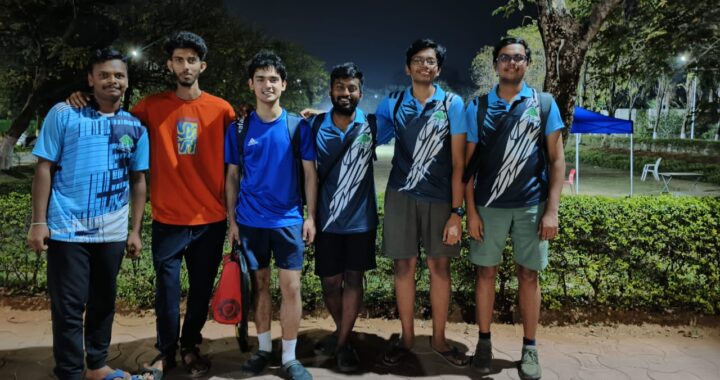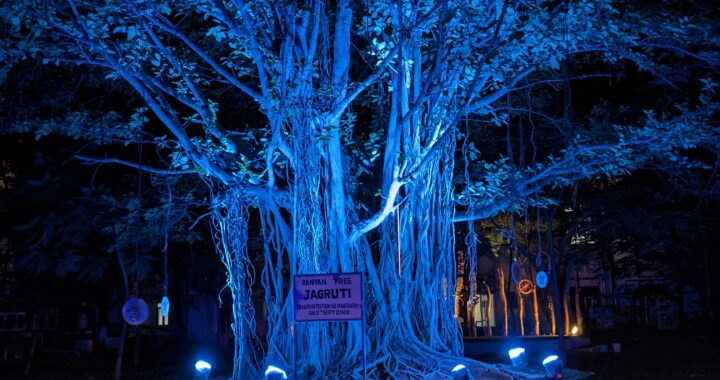IIIT’s Smart Campus Vision

This Monsoon, as a part of the Electronic Systems Workshop course, UG2 had to build various microcontroller-based models to automate and/or monitor events around the campus. This included designs to automate lights or air-conditioners in places such as classrooms, washrooms, and streets. Further, models were deployed to monitor water levels, analyze energy consumption and air pollution levels in the campus. This was a very hands-on course, where teams of three had to build a working prototype and deploy it in real-world locations as mentioned above.
The one thing common across all these projects was their implementation of IoT and it helped to gain meaningful insights from the acquired data. These projects were done with the help of cost-effective ESP32/ESP8266 microcontrollers. The course equipment was provided by the institute and the course required work from the students throughout the semester.
Here is an excerpt from a Q&A with Dr Sachin Chaudhari, the course coordinator.
What is your personal vision for the course?
“The course was designed after several discussions between multiple faculty. In the initial discussions, it was clear that we want to give students a flavour of experiences of how an embedded system goes through different phases from conception to proof-of-concept. Although the main focus was the deployment of these sensor nodes, most of the projects were open-ended and were limited only by imagination. For example: scaling, adding components (sic).”
Does IIIT plan to become a smart campus in the near future based on the projects that were done?
“Yes. We already have a Center of Excellence (CoE) on IoT for Smart Cities. Recently when an IIIT delegation visited France as a part of CoE activities, we saw the concept of smart building and smart city deployments in Bordeaux. These smart campuses inspired us to plan for a smart campus here. Most of the working projects in the course are going to be part of phase 1 of this smart campus. MEITY, GoI has recently also approved a proposal for turning our campus into a living lab for smart city experiments.”
Some students felt that the workload was uneven across teams. What do you think about such sentiments?
“Given that there were 46 teams and 8 faculty involved in giving different projects, this was inevitable. The workload also depended on the time, interest and efforts put by the students, TA and faculty. Keeping the unevenness in mind, marking and grading have been very lenient (B- is the minimum grade given).
In general, we were very happy to see the results. Students have done such a fantastic job and have gone ahead of what we had imagined. The projects are receiving a lot of appreciation in India-EU circles, wherever we have talked about this course. Note that one of the external evaluators was Sachin Gaur, who is coordinator of India-EU collaboration on ICT standardization.”
None of these projects were made with the aim of collecting any personal data in mind. Most of the data being sent on the OneM2M / ThingSpeak (IoT servers) channels are mundane things such as particulate matter levels, soil moisture levels, water pH, TDS, count of people in a classroom and such.
To summarise, this was a very enjoyable course, and we hope it continues to be so for future batches. Putting the suffering aside, this course proved to be rewarding. There is a feeling of satisfaction for having made something cool and useful from one’s own hands; which will remain deployed (hopefully) for a long time.

 DaveAI
DaveAI  Code Wars
Code Wars  Reels
Reels  Seeing That Which Cannot Be Seen
Seeing That Which Cannot Be Seen  Breaking Down The Toughest Photoshoot
Breaking Down The Toughest Photoshoot  Helping Hyderabad ‘Commut’!
Helping Hyderabad ‘Commut’!  A perspective on sports in IIIT
A perspective on sports in IIIT  Paintings of IIIT
Paintings of IIIT  The Tale of Jagruti
The Tale of Jagruti  Cleaning up the Mess?
Cleaning up the Mess?